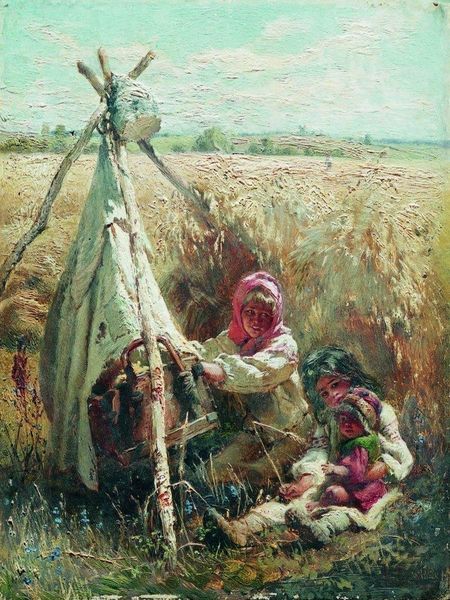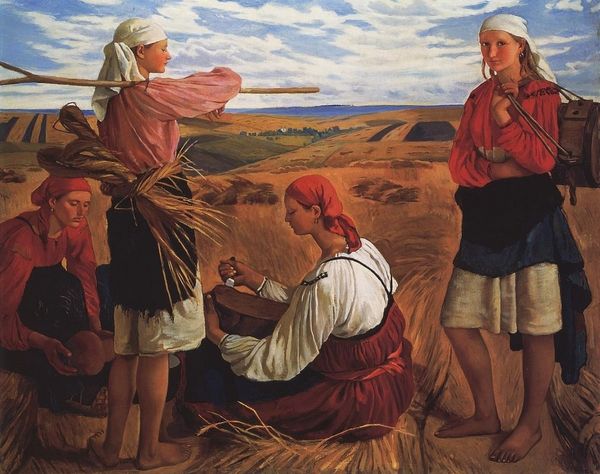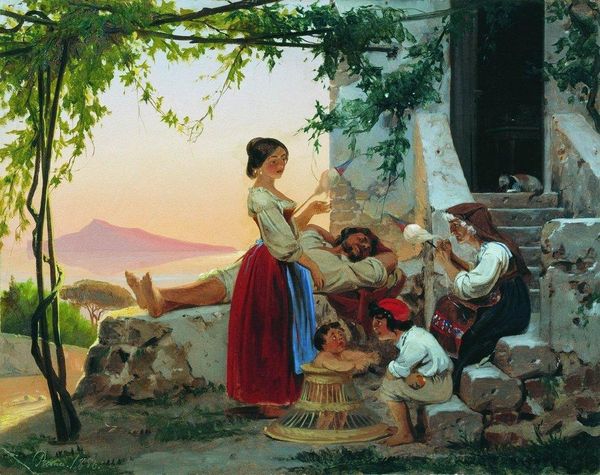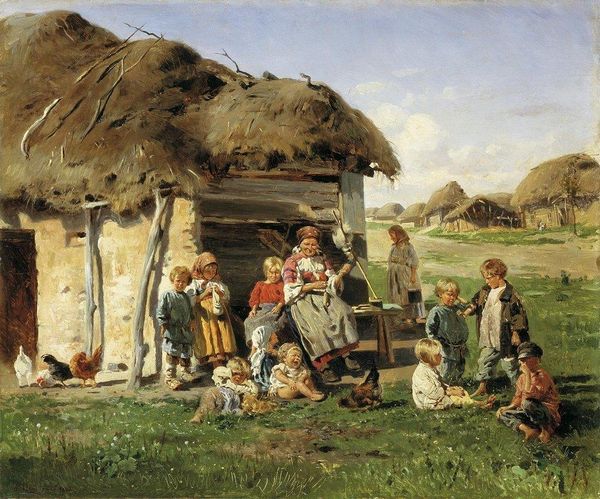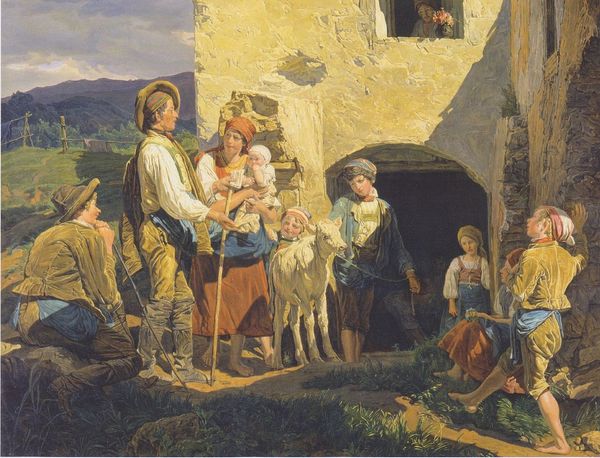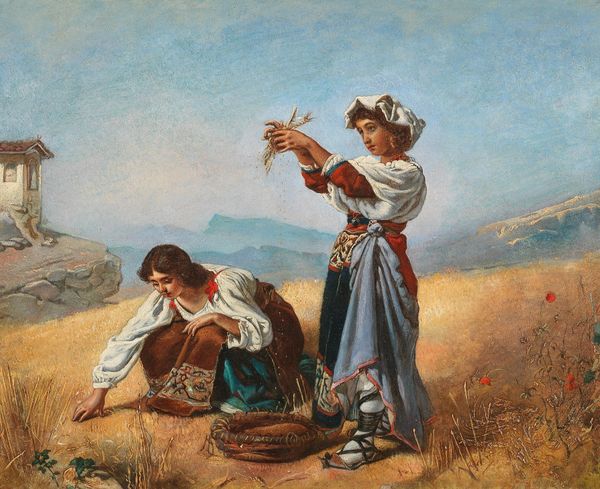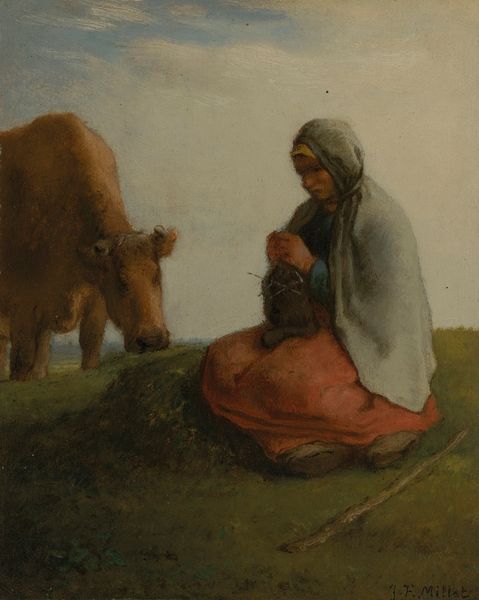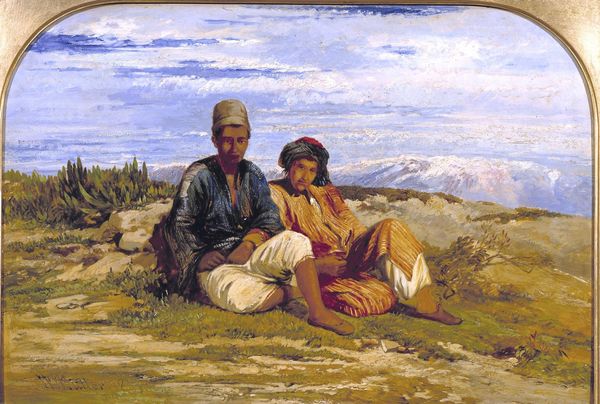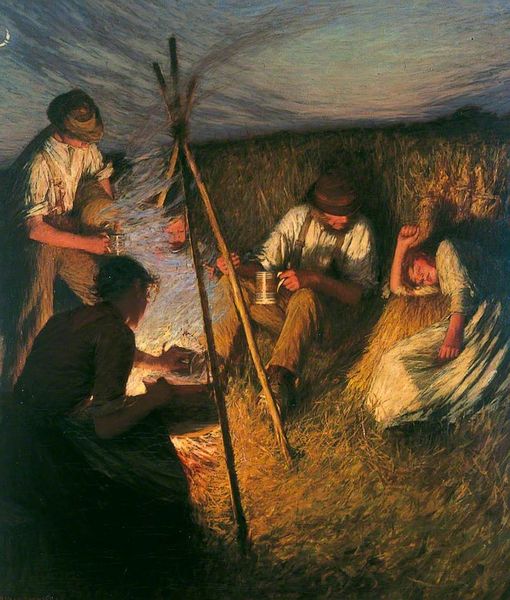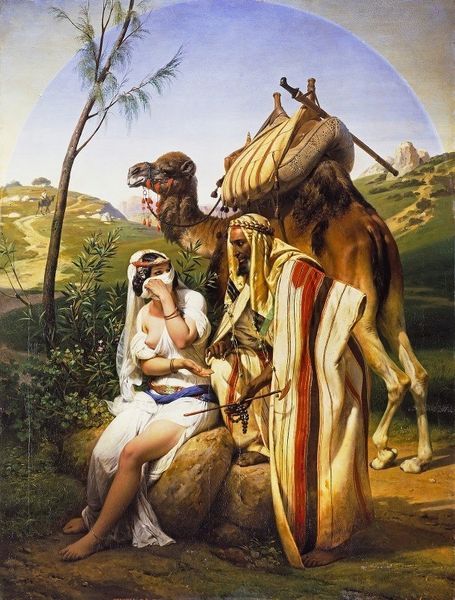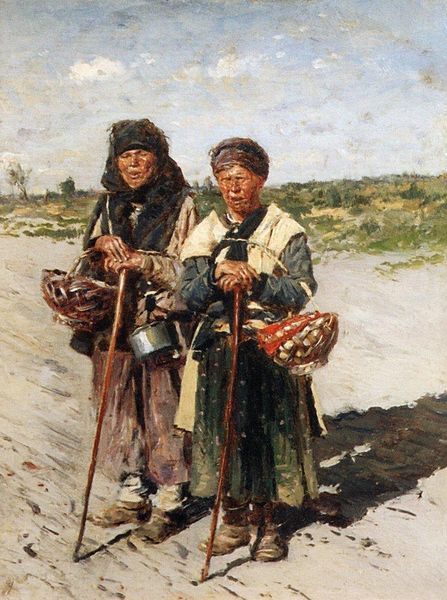
Copyright: Public domain
Konstantin Makovsky painted this unnamed oil-on-canvas work, presenting a scene of rural life. The composition centres on a mother and her children, their figures arranged in a triangular formation that provides stability to the scene. Note the textures: the soft fur beneath the figures contrasts with the rougher fabrics of their clothing and the more distant field of wheat. Makovsky uses these elements to create a semiotic system of signs to interpret the cultural codes within rural life. The visual components of shape and texture engage with a broader artistic and philosophical concern about the relationship between humans and the natural world. The light, almost hazy, creates an idyllic atmosphere. The artwork's ability to evoke a romanticised vision of peasant life shows how the artist uses formal qualities, such as texture and light, to communicate ideas about cultural identity. The interpretation and re-interpretation of such work allows the viewer to create their own meaning.
Comments
No comments
Be the first to comment and join the conversation on the ultimate creative platform.
